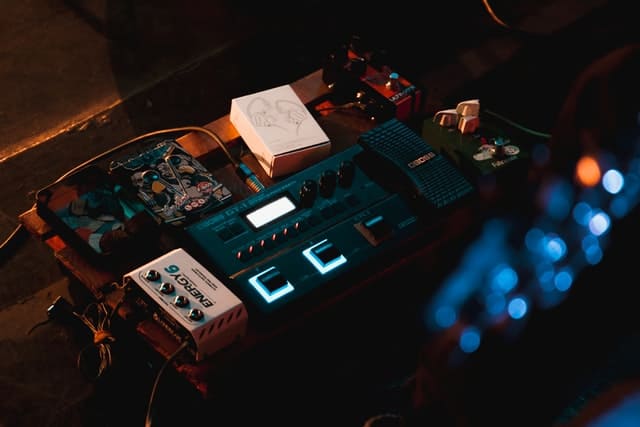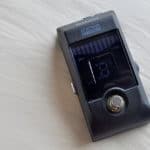Electricity in some cases can not be fun at all.
Mostly when you make some mistake with it.
And with music and audio gear, things get a bit complex from time to time and there is the possibility to get them wrong.
Even guitar pedals, which are quite simple, have a few different configurations of voltages and jack types among them, and it is not unusual to hear from players that confuse them.
But can you damage a guitar pedal permanently by using it with the wrong voltage?
Using the wrong voltage on a guitar pedal can fry the circuit if it’s higher than recommended. Lower voltages are usually fine, however, in some cases, pedals might not work. Digital units are very sensitive to different voltages and prone to break down if used inappropriately.
In this article, I will tell you all you need to know about guitar pedal voltages, how to differentiate them, and how to maintain your gear safe.
After leaving this page you will have a clear idea about the dangers of messing up your voltages and how to prevent it.
Are you ready to get started?
Let’s go!
What are the most common voltages for guitar pedals?
Most guitar pedals work with 9 volts of DC power, but there are also many others that use 12, 18, or 24 volts.
You will even find some out in the wild that works with comparable amounts of AC voltage, but these are rarer, and in most cases clearly differentiated.
A somewhat reliable rule of thumb is that the simpler the pedal is, the most likely it runs on 9 volts, while as they get more complex, and incorporate many functions, or effects that require more processing power, they depend on higher voltages.
Can you damage a guitar pedal if you use the wrong voltage?
Yes. You can absolutely damage a guitar pedal if you use the wrong voltage with it.
This is particularly true for higher voltages than the required ones because you could simply fry their circuits.
Be extra careful and always check things twice before committing to plugging any pedal into your power supply.
Also, remember that more advanced power supplies usually come with different voltage outputs, so check on that also.
Finally, it is known that digital effect pedals are more fragile and sensitive to voltage overloads than analog ones.
While an analog overdrive rated for 9 volts could probably take 12 volts, I wouldn’t try it with a digital delay, or something like that.
When in doubt, however, check your gear’s manuals or ask around on forums or online communities.
For instance, we have a Facebook group where we can help you out with these things!
Will a guitar pedal work with the wrong voltage?
Guitar pedals, in some cases, will still work when you use them with a voltage different than the one they are intended to be used with.
There are, obviously 2 possible cases:
Using a guitar pedal with a lower voltage than the intended one
From not turning on, to getting a sound similar to the one you get when using it with a dying battery. This is sometimes preferred by some players on fuzzes and overdrives and is not likely to damage your gear.
Using a guitar pedal with a higher voltage than the intended one
In most cases, this is risky and detrimental to your gear. Analog pedals tend to take higher voltages, while digital ones can be very fragile and will probably break down. Overdrives and delays that are run with higher voltages are known to provide more headroom, although you should check if your particular model can take it.
Some people use the wrong voltage on purpose
Using different voltages is something many Gear aficionados experiment with, although it should be done carefully.
First of all, it’s always best to check for the experiences of other players online, before taking the risk with your own gear.
But it’s also important to know, that even by doing so before, you will still be putting your pedals at risk because you never know if someone online is lying or doing things differently.
In almost all cases, the benefits of using different voltages can only be reaped from analog units since their circuits are more “flexible”.
With lower voltages, you tend to get a “choking” sound on overdrives and fuzzes, while with higher voltages you can get more headroom and a more “hi-fi” sound on distortions and delays.
Can you get shocked if you use the wrong voltage on your pedals?
Unless you find out a way of plugging your pedal directly into the power grid, I would say there are no high risks of getting shocked by them.
However, remember that I’m an internet person and you shouldn’t ever take physical security advice from anyone online.
The most likely outcome if you mess up badly the voltage for your gear is that you will end up frying the circuit and damaging it.
How to know the voltage you need to use on your pedals?
The best way to find out the voltage required by a guitar pedal is by looking at either the power jack since there are usually engravings or stickers reminding you of the intended voltage, or even their base, where you could find similar information.
Apart from this, manuals are a player’s best friend, but if you are lazy as I am with them, just a quick Google search will probably give you the answers you need.
However, as I recommended earlier, always check on a few sources before committing to anything.
People could be wrong and you could not know it.
Power jack type is also important
Finally, and to avoid any further issues, remember that most pedal’s power jacks come in 2 different formats:
Center negative and center positive.
Where center negative is the most common configuration and the one you will find among Boss pedals, for instance.
But this is something you should always check before switching on a new pedal on your pedalboard.

Hello there, my name is Ramiro and I’ve been playing guitar for almost 20 years. I’m obsessed with everything gear-related and I thought it might be worth sharing it. From guitars, pedals, amps, and synths to studio gear and production tips, I hope you find what I post here useful, and I’ll try my best to keep it entertaining also.





